The Complete Guide of Miso Types- Rice, Wheat, Soybeans, Red, White, Dry, Sweet
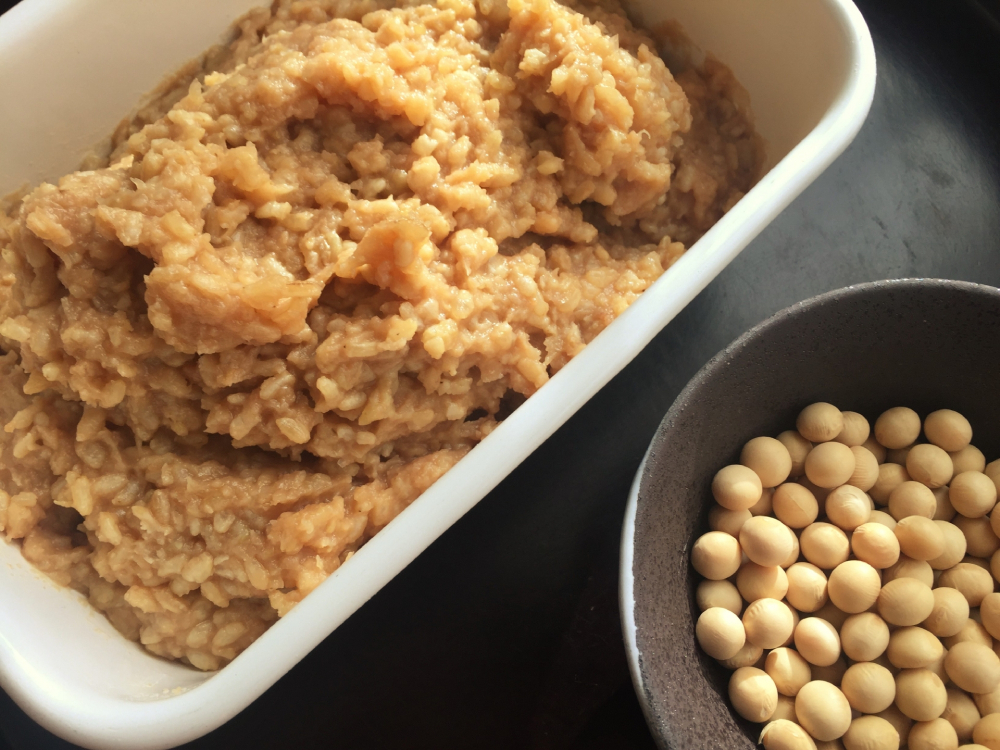
Miso is made from only 3 ingredients -soybeans, koji, and salt.

But why the colors or tastes are different? Why it has rice or wheat in it?
There are many types of miso- rice miso, wheat miso, soybean miso, red, white, light-colored, dry, sweet, and extra sweet.
It is categorized depending on ingredients, color, and taste. It is so simple and easy. Let’s discover your preference!
Difference depending on ingredients
The main ingredients of miso are only “soybeans, salt, and koji”. The type differs depending on what kind of koji (microbe) is added to soybeans and salt, and it can be divided into 4 types: “rice miso”, “wheat miso”, “soybean miso”. and “mixed miso”.
What is Koji?

Koji
Before we move on, let me explain what “Koji” is. Koji is indispensable for making miso.
Koji is recognized as Japan’s national microbe. It is the product of rice grains, wheat, or soybean being inoculated with a bacteria called Aspergillus oryzae.
Kome koji is made from rice, mugi koji is made from wheat, and mame koji is made from soybeans.
Rice Miso (Kome Miso/米味噌)
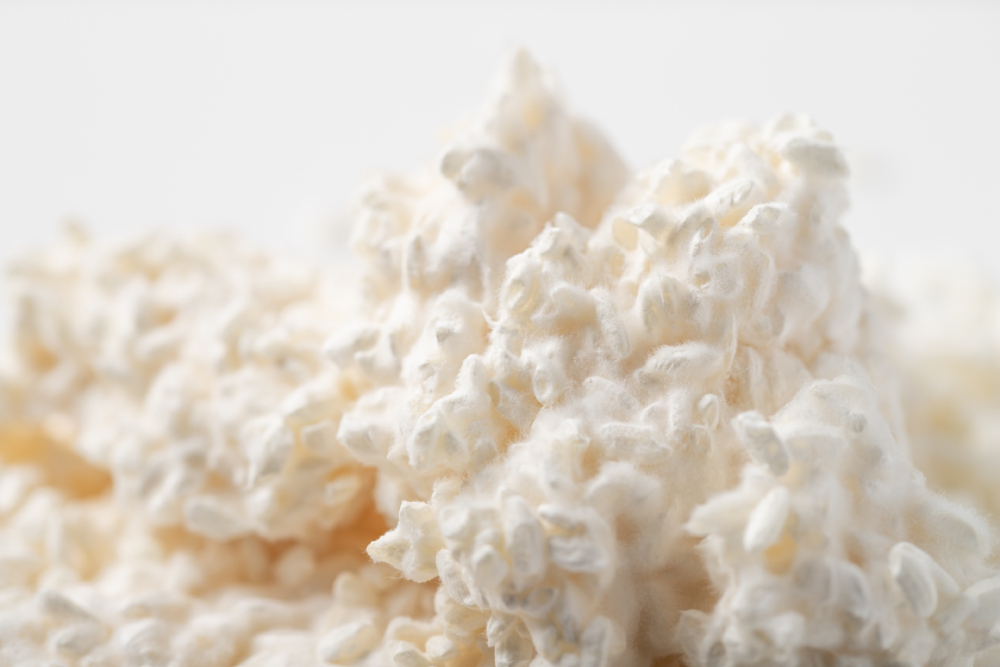
Kome Koji
Rice miso is made by adding kome (rice) koji (米麹) to soybeans and salt.
80% of miso produced in Japan is rice miso.
Wheat Miso (Mugi Miso/麦味噌)

Mugi Koji
Wheat miso is made by adding mugi (wheat) koji (麦麹) to soybeans and salt.
It is produced mainly in Chugoku, Shikoku, and Kyushu regions.
Soybean Miso (Mame Miso/豆味噌)
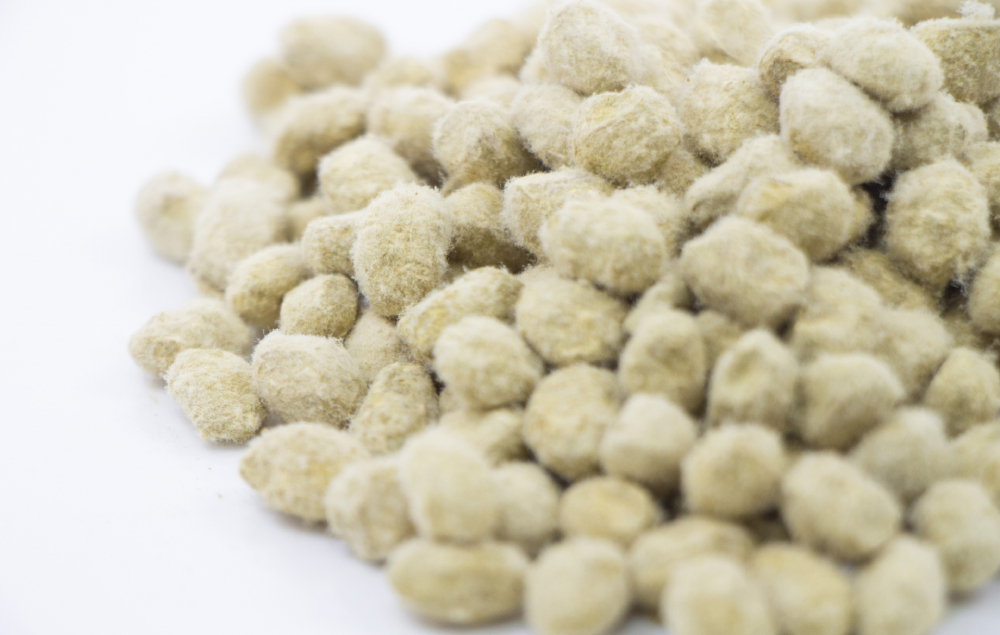
Mame Koji
Soybean miso is made by adding mame (soybeans) koji (豆麹) to soybeans and salt.
It is produced mainly in the Chukyo region.
Mixed miso (混合味噌/調合味噌)
Mixed miso is a mixture of 3 or 2 types of rice miso, wheat miso, or soybean miso.
Or, the miso made by mixing multiple types of koji.
The miso other than rice miso, wheat miso, and soybean miso is also called mixed miso.
Difference depending on taste
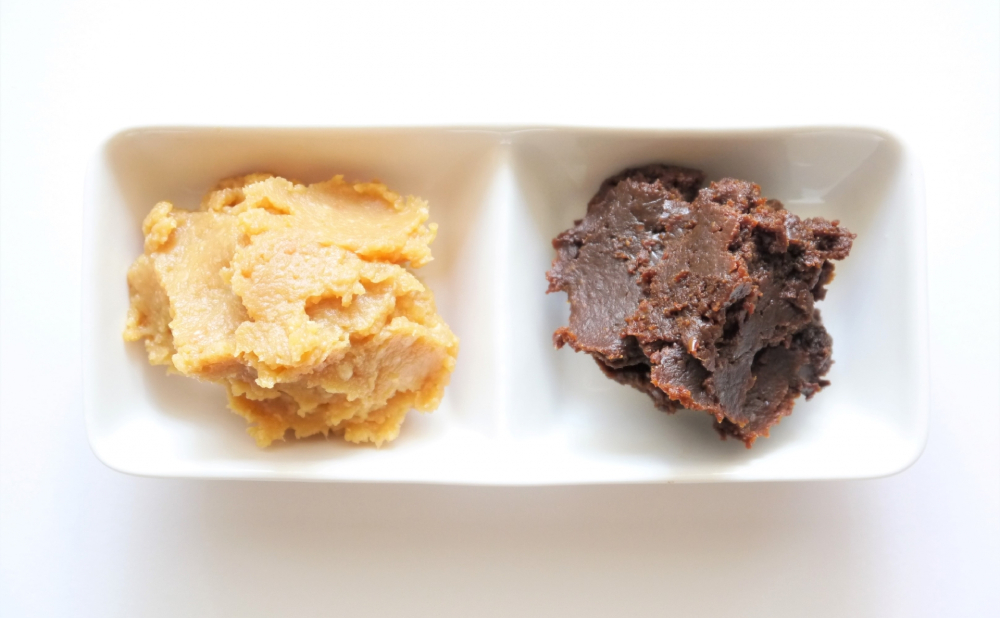
The taste of miso is determined by the saltiness and koji ratio. When 7Kg of Koji is added to 10Kg of soybeans, the Koji ratio becomes 70%.
Miso with a lot of salt will be dry, and miso with a lot of koji will be sweet. If the amount of salt is the same, the higher the percentage of koji becomes “sweet miso”.
Dry (Kara kuchi miso/辛口味噌)
Generally, salinity is 11 to 13%, koji ratio is 50 to 100%. It is the most popular type of rice miso and it accounts for 75% of the total production. It has a strong salty taste with a refreshing aroma.
The famous dry miso brands are Shinshu Miso, Sendai miso, Etchu miso, Kaga miso, and so on.
Sweet (Ama kuchi miso/甘口味噌)
Generally, salinity is 7-13%, koji ratio is 80-150%. Although it is labeled “sweet,” the taste ranges from sweet to salty.
Extra Sweet (Ama miso/甘味噌)
Generally, salinity is 5-7%, koji ratio is 150-300%.
Don’t you think “Ama kuchi miso” and “Ama miso” are confusing? To be exact, there are 3 different types but it is frequently classified as just dry and sweet.
The famous sweet miso brands are Edo sweet miso, Saikyo miso in Kyoto, Sanuki miso in Kagawa, and Fuchu miso in Hiroshima prefecture.
Difference depending on colors
Miso is also divided into three types depending on the color, “white miso”, “light-colored miso”, and “red miso”.
The color changes mainly depending on the period of fermentation and aging. In general, miso with a longer aging period has a deeper reddish color.
White miso (Shiro miso/白味噌)
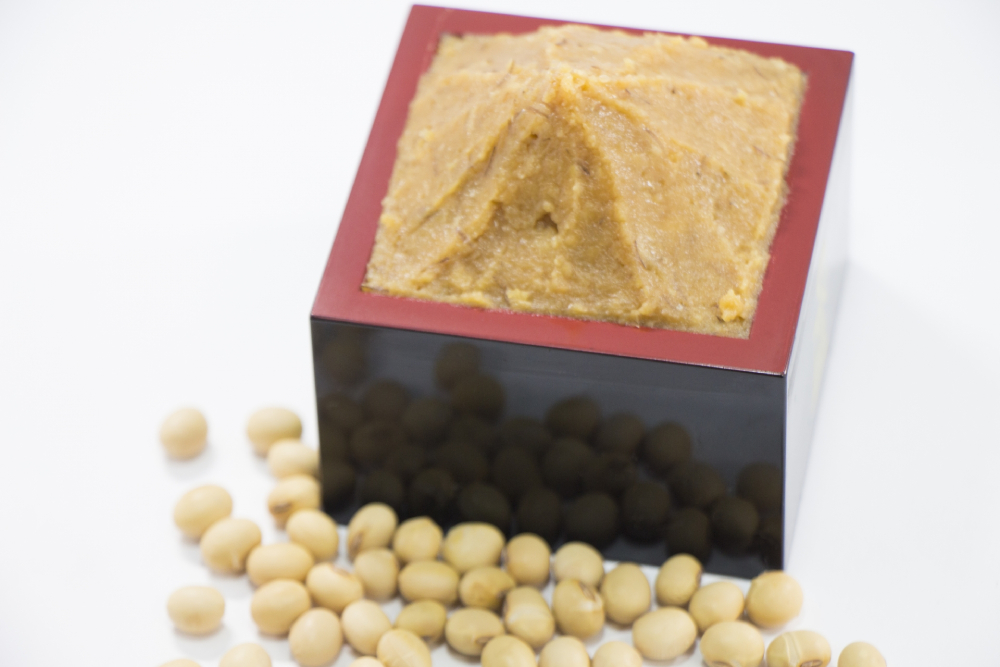
Since the aging period is short, no chemical reaction occurs, so it has a light brown color. In general, white miso has a rich and a little sweet taste. It tends to be low in salinity and has more koji.
Red miso (Aka miso/赤味噌)
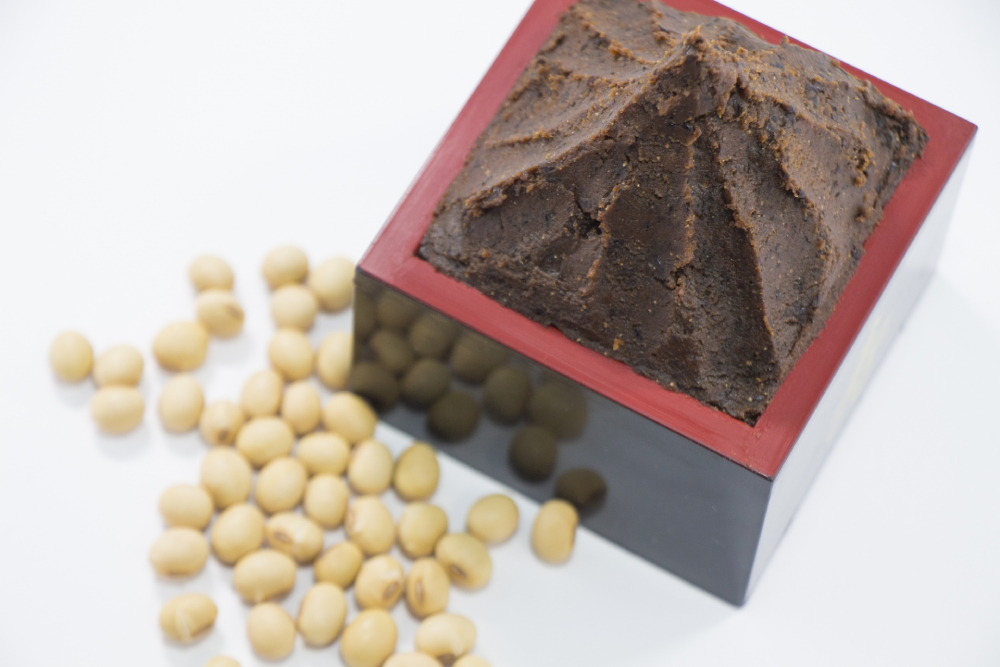
In general, red miso has a long aging period and a high salt concentration. During aging, the amino acids and sugars contained in soybeans undergo a chemical reaction, turning the brown color.
Light-colored miso (Tanshoku miso/淡色味噌)
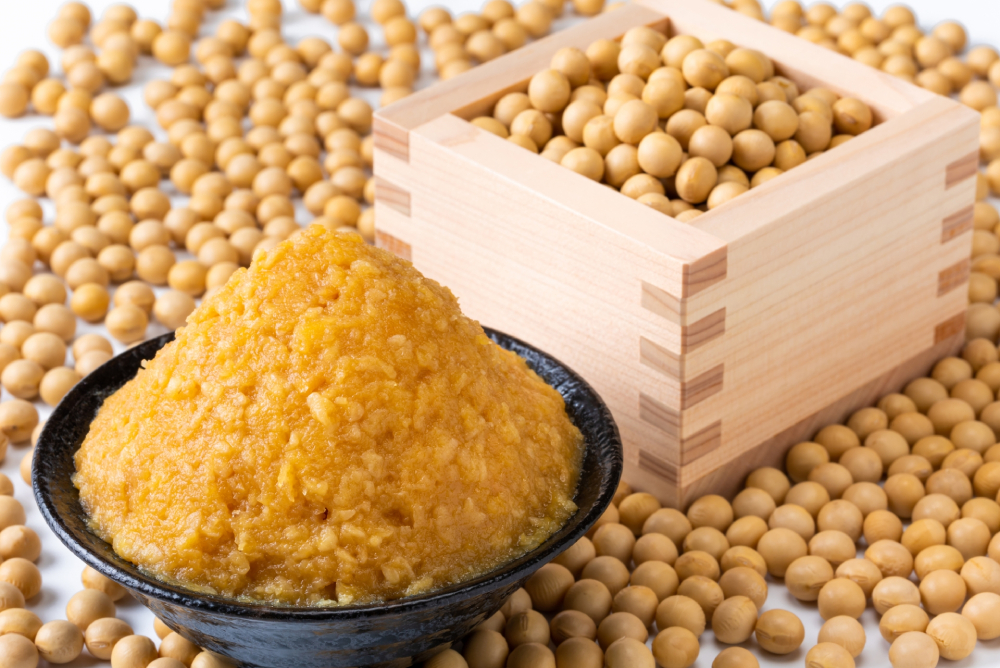
The aging period is between red miso and white miso.
Miso preferred by region

Rice miso (red miso) – Kanto Koshinetsu, Tohoku, Hokkaido, and almost all over Japan
Rice miso (white miso) -Kinki area, Okayama, Hiroshima, Yamaguchi, Kagawa
Soybean miso- Aichi, Mie, Gifu
Wheat miso- Kyushu, Shikoku, Chugoku region, Kanto region
Red miso is consumed mainly in Kanto Koshinetsu. Soybean miso is consumed mainly in the Chukyo region. Sweet white miso is mainly popular in the west of Japan such as Kyoto, Hiroshima, and Kagawa.
Summary
| Classification | Koji Ratio | Salinity | Producing Area | |
| Extra Sweet | White | 150~300 | 5~7 | Kinki area, Okayama, Hiroshima, Yamaguchi, Kagawa |
| Red | 120~200 | 5~7 | Tokyo | |
| Sweet | Light-Colored | 80~150 | 7~12 | Shizuoka, Kyushu region |
| Red | 100~150 | 11~13 | Tokushima and others | |
| Dry | Light-Colored | 50~100 | 11~13 | Kanto Koshinetsu, Hokuriku, and all over Japan |
| Red | 50~100 | 11~13 | Kanto Koshinetsu, Tohoku, Hokkaido, and almost all over Japan | |
| Classification | Koji Ratio | Salinity | Producing Area |
| Sweet | 150~250 | 9~11 | Kyushu, Shikoku, Chugoku region |
| Dry | 50~100 | 11~13 | Kyushu, Shikoku, Chugoku region, Kanto region |
| Koji Ratio | Salinity | Producing Area |
| Whole quantity | 10~12 | Chukyo region (Aichi, Mie, Gifu) |

Thank you for reading!

I usually have light-colored rice miso. What kind of miso do you like?
 Comment
Comment

 Home
Home 01/07/2023
01/07/2023